Marketplace
Oxygen Conserving Devices
A round up of some OCD offerings currently on the market:
- By Joseph Duffy
- Jun 01, 2011
An oxygen conserving device (OCD) controls the flow of oxygen from the oxygen source to the patient. The OCD releases oxygen only when the patient inhales, thus dramatically increasing the amount of time a patient can use the oxygen supply. This offers patients increased mobility and comfort from avoiding a continuous flow of oxygen into the nostrils. Ultimately, OCDs look to make oxygen therapy more efficient, more portable and less intrusive.
There are two types of oxygen conserving devices, described here by All-Med Services of Florida:
- The fixed-pulse type delivers a pre-determined pulse (volume) of oxygen when the patient initiates a breath. The oxygen flow stops at a preset limit. These devices typically have higher initial flow rates, which determines the shape/size of the waveform and allows the pulsed volume of gas to be delivered in the first portion of the inspiration. The actual pulse volume of oxygen delivered per setting vary by manufacturer and specific device and are commonly based on mathematical models and assumptions intended to produce a fraction of inspired oxygen (FiO2) similar to that delivered with continuous flow. The range of pulse volumes is significant, with devices delivering from about 5 ml to 22 ml per setting per breath.
- Demand-pulse units operate on the same principle as fixedpulse, in which a patient breath triggers the device to deliver the oxygen. However, depending on the specific device design, after the initial pulse of oxygen is delivered, some devices continue to deliver a preset flow (i.e., 2 liters/min) of oxygen until exhalation, while others have a diminishing flow until the valve closes and flow completely stops. How much of the oxygen flowing after the pulse is delivered in the first two-thirds of the breath depends on the device. Flow delivered in the last one-third of the breath is considered wasted, since it falls into the portion of the breath considered anatomical deadspace.
With a normal breathing pattern, a person will inhale onethird of the time and exhale about two-thirds of the time. Since the OCD only releases oxygen during inhalation, an OCD, in theory, extends the use time of the oxygen supply by about 3:1. So a cylinder using an OCD device claiming a 3:1 savings ratio will last three times longer than a cylinder sans the device. Some devices claim to offer a ratio of up to 7:1. Clinically, it is important to know that the savings ratio is inversely related to oxygen delivery. In general, the higher the savings ratio the smaller the volume of oxygen delivered per setting.
Manufacturers of OCDs say the devices help providers by reducing the frequency of refills, cylinders and deliveries, thus helping their bottom lines.
OCDs are not solutions for every patient. And no one device fits the needs of all patients; therefore, it can take diligent evaluation to meet individual patients needs.
Here are some OCD offerings currently on the market:
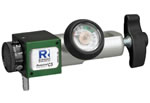 Respond C5 Conserver
Respond C5 Conserver
- The Respond C5 Conserver by Responsive Respiratory (RRI) offers versatility through three continuous flow settings (2, 3, 4 LPM) and a 5:1 conservation ratio. The Respond C5 is quiet and compact and has a lightweight design.
- Responsive Respiratory offers private labeling of the Respond C5, allowing providers to brand their own oxygen conserving device for sale.
- RRI laser engraves the provider’s name and/or logo on the Respond C5 and claims it will ship customized products within 24 to 48 hours.
Responsive Respiratory
(866) 333-4030
www.respondo2.com
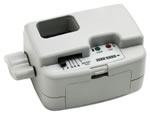 Portamate II Oxygen Conserver
Portamate II Oxygen Conserver
- The Portamate II Oxygen Conserver is a lightweight (14 oz.) oxygen conserver that features an every-other-breath setting for up to 6:1 savings.
- The Portamate II offers a continuousflow toggle switch, pulse indicator light, low-battery indicator and built-in brass regulator with a cylinder contents gauge.
- The unit operates on one C-size battery for up to 45 days of use, has a built-in 0 to 3000 psi gauge and comes with a threeyear limited warranty.
Graham-Field Health Products
(800)-347-5678
www.grahamfield.com
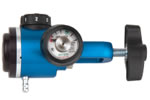 Invacare Pneumatic Oxygen Conserver
Invacare Pneumatic Oxygen Conserver
- The Pneumatic Oxygen Conserver has a compact design and is CGA870 compatible. Weighing less than one pound, it does not use batteries.
- A single selector knob controls the unit’s on and off switch, and operates the liter flow and continuous flow mode.
- Delivering a consistent volume of oxygen with each breath (up to 40 breaths per minute), the conserver senses a breath and delivers an oxygen bolus in the first third of the patient’s inspiratory cycle.
Invacare
(800) 333-6900
www.invacare.com
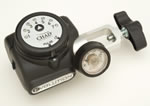 EVOLUTION Electronic Oxygen Conserver
EVOLUTION Electronic Oxygen Conserver
- The EVOLUTION Electronic Oxygen Conserver provides a minimum of two years’ operation using two AA alkaline batteries.
- The unit has a sensitive triggering mechanism, fast delivery, and conserve settings up to 7 LPM. The EVOLUTION was developed to accommodate a broad range of patients and conditions. The single-lumen design provides a 5:1 savings ratio at all settings.
- Features also include a uniform volume of oxygen with each pulse ranging from 14 to 40 breathes per minute and operation between 200 and 3000 PSI.
CHAD therapeutics
(800) 423-8870
www.chadtherapeutics.com
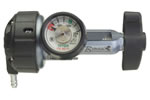 Bonsai OM-808
Bonsai OM-808
- The Bonsai weighs only 9.7 oz and offers an oxygen conservation ratio with settings between 1 to 7 LPM.
- The unit delivers an oxygen bolus in the first half of the inspiratory cycle, ensuring saturation at 90%+. With a consistent delivery volume, the risk of desaturation is significantly reduced.
- The single-lumen pneumatic design provides up to a 6:1 savings ratio.
- The unit also offers a hybrid delivery method, uniform pulse, and operation between 200 – 3,000 PSI. the Bonsai comes with a twoyear warranty.
CHAD therapeutics
(800) 423-8870
www.chadtherapeutics.com
This article originally appeared in the Respiratory & Sleep Management June 2011 issue of HME Business.
About the Author
Joseph Duffy is a freelance writer and marketing consultant, and a regular contributor to HME Business and DME Pharmacy. He can be reached via e-mail at [email protected].